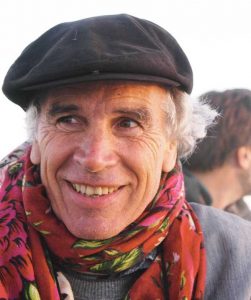How could a book with this main title not be a beautiful book. Visually and narratively, On Beauty, by Tom Butler and Sandra Lubarsky, with principal photography by Antonio Vizcaino, presents a wonderful ode to Doug Tompkins, one of the world’s greatest conservation activists.
What a Loss
In December 2015, Tompkins died of hypothermia after a kayaking accident, and his death “rocketed around the world.” Outside environmental spheres, people may know of him as the founder of The North Face and Esprit companies. But as On Beauty describes, he was also “the most ambitious and effective wildlands philanthropists in history,” and “perhaps the greatest citizen advocate for national park creation since John Muir.” He also preserved the land that became the largest gift of private land to the government in South America.
A Transformational Force
On Beauty takes us into Tomkins’ mind, life and accomplishments. It begins with a visual gallery of some of the most beautiful areas in Argentina and Chile, places he loved. And photographer Antonio Vizcaino’s amazing photos continue throughout.
The prologue sets Tompkins’ philosophical tone, which still gives me pause. Tompkins’ thought “the idea of beauty can be a transformational force for healing a broken world.” Tom Butler, conservationist and writer who worked with Tompkins, asks provocative questions, such as, “What if each of us aimed, as Doug did, for the beautiful line, aligning the gradients of our lives with those of others? What if every person sought to embody, in the most ambitious way available to her or him, a beautiful life?” In essence, “How can we live in ways that promote beauty?” On Beauty expresses the ways in which Doug Tompkins did.
Promoting a Cognitive Revolution

Doug Tompkins
Authors Tom Butler and Sandra Lubarsky creatively organize the book into chapters that thread different lenses of beauty pertaining to Tompkins, such as “The Kinship of Beauty and Life,” “Animated by Beauty,” and “Toward Beautiful Action.” Reading them puts you into a space of all that beauty can mean, and what is necessary to restore it. To Tompkins, something big is required – a cognitive revolution. We learn how his involvement with leading thinkers such as the Norwegian philosopher and founder of “deep ecology” Arne Næss led him to purport that we need “a change in humanity’s operating system from human-centeredness (anthropocentrism) to ecocentrism, putting the health of nature at the forefront of concern and recognizing that all life has inherent value.”
Unprecedented Conservation Work
In On Beauty, Butler and Lubarsky give us the story of a man who left the fashion business to become a conservation activist. For those of us in mid-life, if you’re like me, learning that he did “unprecedented conservation work during the last quarter of his life” will inspire. How some of this work manifested in book form particularly moved me as well. With Vizcaino and his wife Kris, readers get a glimpse into books Tompkins and his foundation published that document the “grandest wild places left on Earth” as a way to “use the power of natural beauty as a motivator for conservation.” But the books also look at the flipside. His foundation “strived to publish the world’s biggest, most beautifully executed coffee-table books on ugliness,” — in-your-face looks at the destruction of beauty in our world…and why humans continue to do it.
Farmland Restoration
I learned the most in the area of the book that discusses Tompkins’ work in agriculture, and why he thought:
“there will be no saving the Earth’s wildness – as embodied in wilderness areas, national parks, and other protected areas – without solving the problem of agriculture, the dominant force degrading Earth’s beauty and biodiversity during the last ten or twelve thousand years.”
It’s not that he wanted to be rid of farms. He wanted to farm right – how to go about farmland restoration to “reverse the ugliness and enhance productivity in the agrarian landscape.” And he didn’t just talk about it. He was hands-on.
Wildlands Philanthropy
This book will open your eyes to all that wildlands philanthropy can mean, and in Tompkins’ case, what it has meant to Argentina and Chile. You’ll leave this read more fervently understanding why the Earth is not “merely a storehouse of resources for human exploitation.” And I hope it will leave you deeply musing on his belief that “the crisis we are all ensnared in I’d say it comes down to – in the absence of beauty.”
If you are a Tompkins fan, you’ll relish this book. It’s also for everyone, because it presents a life story full of courage, conviction, and legacy for a “better, saner, more beautiful world.”
Many thanks to the David Brower Center for this beautiful book about an extraordinary man.

